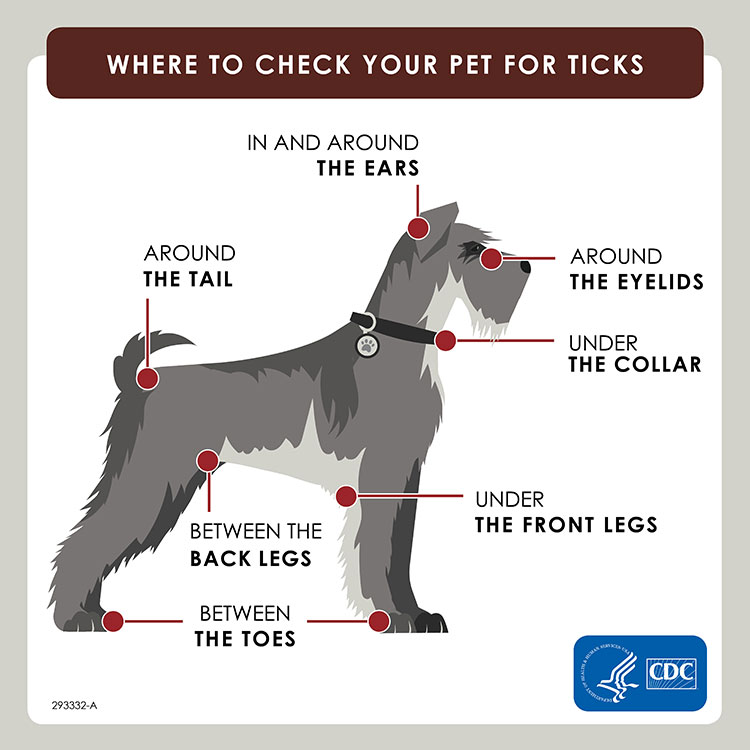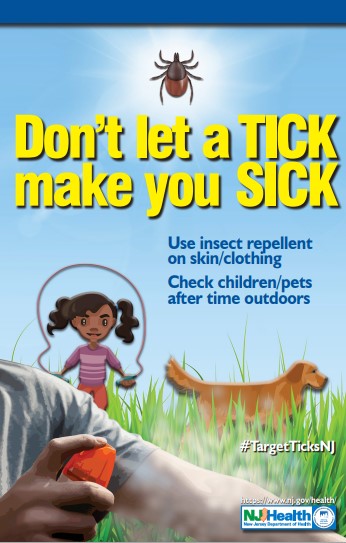How to Avoid Tick Bites
A tick that is infected with certain types of bacteria can bite people and cause them to become sick. You can reduce the risk of getting diseases from ticks by taking steps to avoid getting bitten by a tick.
- Avoid wooded areas with dense shrubs and leaf litter, where ticks like to hide.
- Make your yard less attractive to ticks by mowing lawns and trimming trees.
- Wear solid, light-colored clothes. This will make it easier to find a tick on your clothes.
- Tuck your pants into your socks and wear a long-sleeved shirt. This will help prevent a tick from attaching to your skin.
- Use insect repellents (bug spray) on yourself and your pets. There are two types of repellents effective for ticks. Repellents that contain DEET can be used on clothes and exposed skin. The other type of repellent contains permethrin and should ONLY be used on clothes. Always read and follow label directions carefully.
- Check yourself for ticks frequently when you are in tick-infested areas. Check again after returning and again before going to bed. Don’t overlook some of ticks’ favorite hiding places—on the scalp, behind the ears, under the arms, on the ankles, and in the groin area.
How to Remove a Tick
The best time to get a tick off of your body is before it bites. If you have been in areas where ticks live, be sure to look closely all over your body to see if any are moving around. Simply use a tissue to grab the tick and throw dead ticks in the trash. Do not squeeze or crush a tick with your bare hands.
If you find a tick and it has already bitten you, follow these steps:
- Use tweezers to grasp the tick by its head (not just the body). Grasp the tick as close to your skin as possible.
- Pull steadily until the tick pulls out (expect to feel some resistance)
- After removing the tick, clean the bite area and tweezers with alcohol.
- Wash your hands with soap and water.
How to safely throw away a tick:
- Place a live tick in a sealed container or sealed plastic bag to prevent it from escaping.
- Place the container or bag in the trash.
- Do not flush ticks down the toilet because they can easily survive in the water.
Access the Center for Disease Control’s new Tick Bite Bot!
The Tick Bite Bot is a free, easy, interactive tool that assists its’ users in properly removing a tick, as well as where and when, if need be, to seek medical attention: https://www.cdc.gov/ticks/removing-a-tick/tick-bite-bot.html
To learn more about Tickborne Diseases and Illnesses, visit NJ Health.


